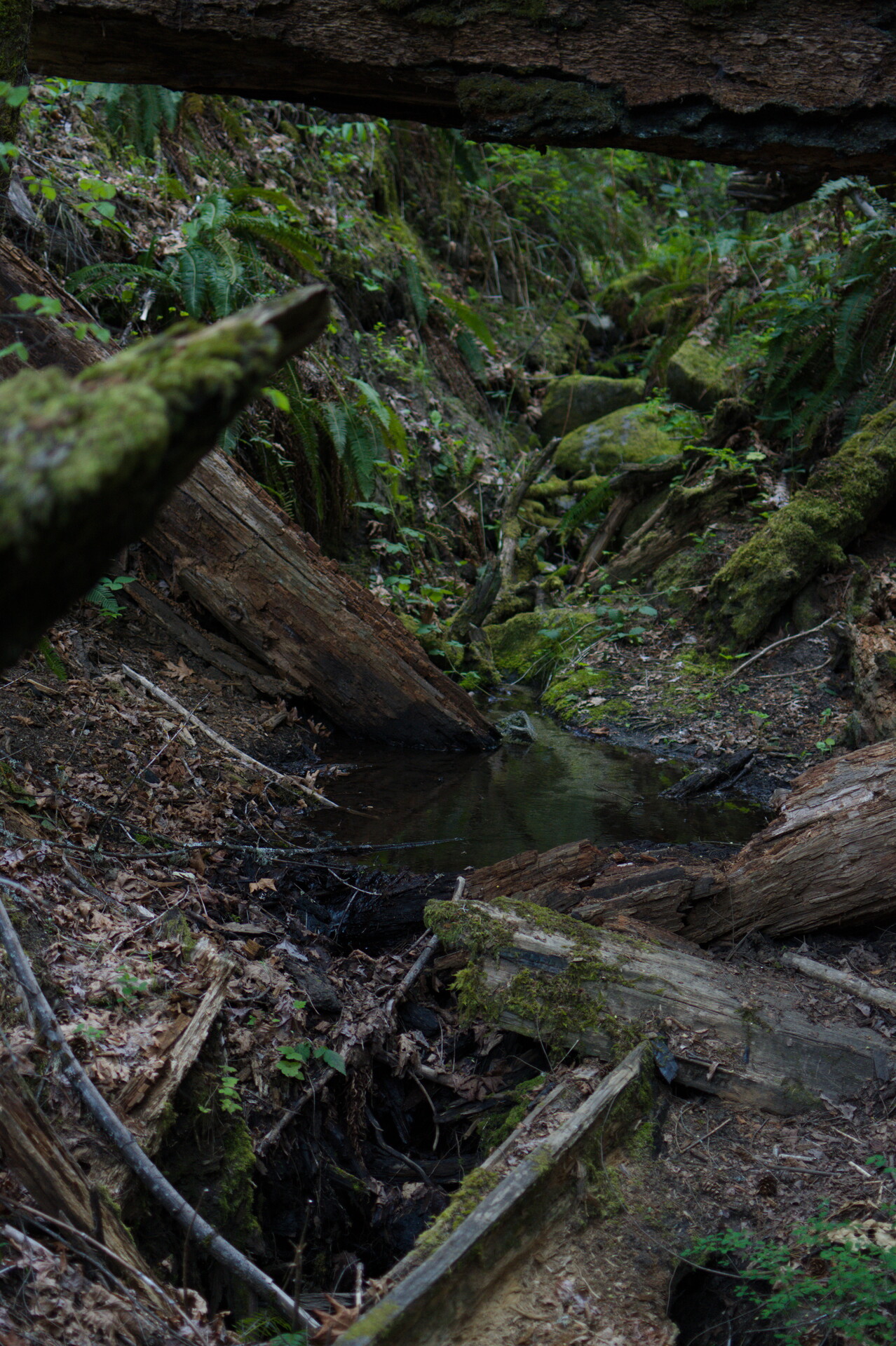In The Sims, adult sims are all exactly the same height, but almost any object can scaled up or down at will. My Instagram profile picture is an oversized fish bowl. The fish bowl can be any size, but the fish stays the same size. The fish, in the picture, is so proportionally small that it’s obscured “inside” the castle submerged decoratively inside the fish bowl. This is a special kind of “inside” unique to 3D computer graphics, in which objects can “no clip” into each other. Nothing happens. The coordinates of one polygon’s faces merely intersect with the coordinates of the other polygon’s faces, which, being opaque, obscure part or all of the smaller polygon’s.
The fish bowl in question was in the subbasement of a house I had designed. From the house where the usual hedonic game loops took place, a stairway led down to a large, dark room that surrounded the above-ground pool. The walls of the pool were made of glass, so that its brightly-lit contents could be viewed. This revealed, instead of sims swimming, a quirk of the game in which sims swimming in the pool were invisible except for their shadows. Their shadows were visibly jerky, not like the smooth motion of the swimming sims seen from above the pool, but a “neutral” pose oriented in whichever cardinal direction they were swimming, as if they were mannequins being drowned in stop-motion. The shadow-gallery was surrounded by a fish-gallery of upscaled taxidermied fish mounted on the walls. (Once dead, fish could be resized.) The floor beneath this contained only the giant, apparently empty fish bowl.
The walls of my childhood room were blue. I can’t remember what the wallpaper pattern was, exactly, but the predominating color was blue. The bathroom had a pattern of sailboats. Inside my room was a shape the color of the negative image of the baby blue wallpaper background. It wasn’t the right shape. It was too dense, too complex, too convex, or too concave. I could feel the shape, and I was the wrong size. My limbs layed at the wrong angles, and touched in the wrong places.
Medicine is cinema. In a quiet room, a series of images are inserted into your mind, and some of them will dog you with ambiguity. The only “but the ending didn’t make any sense” criticism that’s not nonsense is of a diagnosis, because it would indeed be good if the diagnosis made sense. If a doctor tells you your inner ears are filling up with water, distending their tubular passages and causing your vertigo, it would be good if that doctor told you how the water could drain out.
A good half of my instagram photos are of water. I’m drawn to obscurity and reflection, to presences that are sensed in the ways they hide and distort other presences. Glass will also do, especially when fogged with moisture, but there is one photo that’s a tree reflected in the treated, slightly warped glass of a window, behind which is a smaller potted tree.
I have a minor cough that I sometimes suspect is caused by the mold I imagine growing in the walls of my trailer. There have been leaks in the roof that I’ve patched, but before the patches I know that water has gotten into places I can’t see, behind the superficial interior walls. There is visible water damage to the bottom of the wooden frame of the slide. The slide is the part that recedes and protrudes from the side of the trailer with the help of an electric motor. Even though I think the frame is decorative rather than structural, the way that the wood is bulging and delaminating where it meets the floor gives the impression that the slide is slowly collapsing, which, because it’s the part of the trailer that is most often leaking, could be cathartic.
Like a diagnosis made up of incomplete anatomical imagery, I don’t know how to tell a story, only how to toss various images about, hoping that they will agglomerate into more than the sum of their parts.
